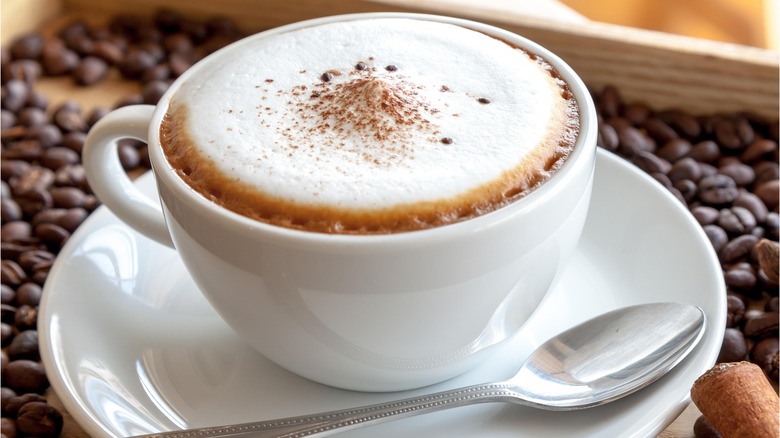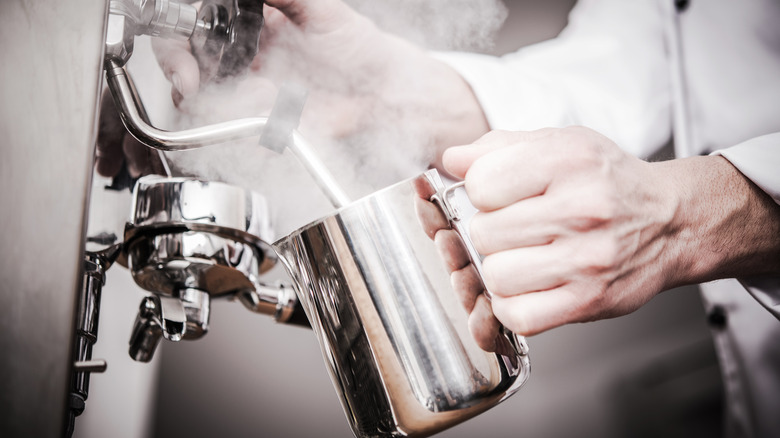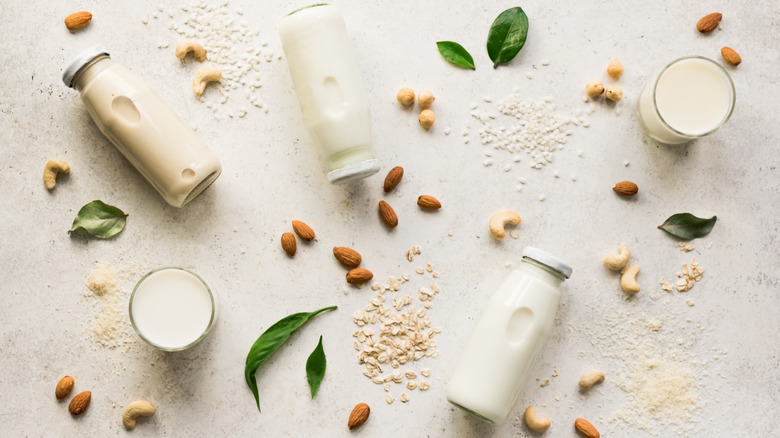Does Microfoam Really Make A Difference To Your Coffee?
Java lovers who crave complex coffee flavors in their lattes, cappuccinos, and flat whites probably believe this one thing: The foam seriously matters. Get it wrong, and your entire drink is off balance, leaving a disconnect between the rich coffee and what should be a balancing, velvety milk foam. That's where words like micro and macro become important designations.
Before determining whether the touted microfoam in a coffee concoction is important to you personally, it helps to know how it differs from a macrofoam. Essentially, it all comes down to air bubbles, according to Roasty Coffee, which explains in a "How to Brew" guide that the goal of a microfoam is to inject the smallest possible amount of air into the milk while frothing. A macrofoam, on the other hand, contains larger air bubbles, which are typical when using an at-home handheld frother.
Does it all really matter? Perhaps not if you're a utilitarian coffee drinker, guzzling a cuppa while flying out the front door, enjoying that little jolt of caffeine to jumpstart your day. But if you savor the subtle nuances of carefully crafted "art in a cup," then take a minute to understand the role that microfoam plays in painting the perfect java landscape.
How microfoam makes a difference
In a YouTube demonstration from Breville Canada, a barista explains how earlier foaming techniques employed "large frothy bubbles" that added nothing to flavor balance and failed to fully integrate with the coffee – but microfoam fixes both those issues. It also serves as the perfect base for "latte art" such as the intricate heart designs created by professional baristas.
The proper tools determine the quality of your coffee creation, and when it comes to making a true microfoam, you'll need a steaming wand that's attached to an espresso machine, explains Latte Art Guide. The hot steam enters the milk at a high pressure point, aerating the liquid and expanding the milk's inherent natural fats. This results in a silky, liquid-velvet texture that's smooth and fine, blending naturally with the hot espresso in your favorite drink. Roasty Coffee further notes that the numerous tiny air bubbles encapsulate the espresso flavors and the sweetness in the milk, all of which come alive when sliding over the taste buds on your tongue.
If you use a standalone external frothing machine that simply whips up the milk, it's possible that you'll end up with an air-filled macrofoam that perches stiffly, and briefly, atop your beverage. These types of frothers vary in ability and precision, so if this is your only option for creating foam, New York Magazine recommends buying one that both heats and steams the milk.
Milk matters
The type of milk you use makes all the difference in achieving the perfect microfoam for all types of espresso-based drinks. Fresh, cold, whole milk is ideal, but milk alternatives such as oat, soy, coconut, macadamia, and almond can be substituted with a little experimentation, notes Breville Canada. Generally, the microfoam texture you're seeking is best achieved through non-dairy alternatives with higher fat proteins and sugar content. Oat and soy milks more closely fit this criterion than almond ones, which tend to be more watery.
Temperature matters as well, according to Latte Art Guide, which explains how excessively high heat can cause the milk to over-expand, giving you those large, fluffy air bubbles that you're trying to avoid. The sweet spot for hot steamed foam lies within a range of 140 and 160 degrees F. Since dairy substitutes typically don't stand up to high heat as well as cow's milk, temperatures for creating foam from these alternatives should not exceed 130 degrees F. Otherwise, you may experience some curdling and cracking.
Finally, creating the perfect balance in your cup includes choosing the correct amount of microfoam. It can vary based on personal preference, but in general, you don't want to overpower the coffee flavor. Latte Art Guide recommends no more than ½ inch of microfoam for a latte and just under an inch for a cappuccino. A Couple Cooks states that flat whites require only about ¼ inch sitting pretty atop the espresso and steamed milk.


